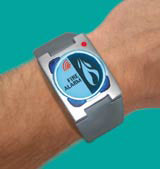Inclusive ideas on the boil
Once the domain of product specialists, DBA’s Design Challenge is seeing entries from a wider range of disciplines, as Lynda Relph-Knight discovers
It’s amazing how the phrase ‘inclusive design’ has taken off. Unlike the old ‘added bran’ on 1990s packs for wholesome foods or the descriptor ‘brand strategy’ applied more recently to most design groups’ names, ‘inclusive design’ is finding real meaning, in research establishments at least.
Some manufacturers and academic institutions such as the Helen Hamlyn Research Centre at London’s Royal College of Art have espoused the idea of making products and services like public transport accessible to all, regardless of age, health or physical ability. And it is obvious from the six entries to this year’s DBA Design Challenge, organised by HHRC with the Design Business Association, that designers are keen to take up the gauntlet to develop ideas with real commercial potential.
What also comes across from the contest is that ‘inclusive design’ isn’t just the province of product designers. The winning consultancies, Factory Design and Seymour Powell, focus on products. But with Lewis Moberly, Seachange, The Team and Roundel in the running, the branding and graphics groups are also in contention.
This year’s judges were looking for insight into the needs and aspirations of excluded groups of people as well as good communication of ideas. But a fundamental requirement of the challenge is innovation; the greatest innovation being to devise goods and services that improve all of our lives.
The brief:
• To design a mainstream product, service, garment, environment, print piece, on-line or other communication that incorporates the needs and aspirations of currently excluded groups of people
or
• To create a design to help make the lives of young disabled people more mainstream
• The themes to be addressed: working lives, domestic lives, urban mobility, leisure and play, communications, care or smart wearables

The Active Companion by The Team
Given that one in seven people in the UK has a hearing impediment, The Team has created a wearable device that alerts the wearer to alarms. The device, which can be worn on the wrist, as a pendant or as a badge, vibrates when an alarm sounds.
The aim is to make life safer for people who might be at risk if, say, a fire alarm sounds and they don’t hear it. It allows for ‘inclusion’ in potentially life-threatening situations. Visual symbols appear on the face of the device to show what kind of alarm has been activated.
A development idea is to display details of transport changes on the device when tannoy systems at stations are inaudible – as they often are even to people with perfect hearing.
-
Post a comment




